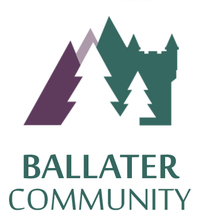Many thanks to The Hill's family for facilitating this camera's location and to
Aberdeenshire Council for capitally funding its installation in partnership with The River Dee Trust & Dee District Salmon Fishery Board. The medieval development pattern along this stretch of the River Dee was significantly influenced by the ancient trackways traversing the Grampian Mounth. These trackways played a crucial role in determining the strategic locations of castles and other settlements along Deeside during the Middle Ages. The former railway station in the area has now been repurposed as a visitor and exhibition center.In the early 14th century, the region formed part of the estates of the Knights of St John, but significant settlement did not occur until around 1770. Initially, the area served as a spa resort to accommodate visitors to the Pananich Mineral Well. Later, with the arrival of the railway in 1866, Ballater experienced an influx of tourists who took advantage of the improved accessibility. Although Ballater railway station ceased operations in 1966, it continues to serve as a visitor center, showcasing an exhibition highlighting the village's royal connections.Many of the buildings in Ballater date back to the Victorian era, and the village center is designated as a conservation area. In May 2015, the old visitor center suffered substantial damage from a fire but has since been meticulously restored and reopened. Notably, the development of the village was spurred by the construction of the Glenmuick Church following the completion of the bridge over the River Dee. This new "Centrical Church" replaced the ruined churches at Tullich, Glengairn, and Foot o' Gairn. Its construction began in 1798, with the church designed by Mr. Massey of Aberdeen at a cost of £670. The church featured a length of 72 feet and a width of 34 feet, with staircases leading to galleries at both the east and west ends. The interior included a pulpit, a sound board, a latron, and stair and rail. In 1879, a clock was installed, manufactured by Messrs Gillett & Brand of Croydon. The winding mechanism of the clock was electrified in 1982, and an additional vestry was added in the early 1850s.
Ballater holds a significant royal connection, as it lies merely 7 miles west of Balmoral Castle, the British royal family's holiday home. Since the days of Queen Victoria, the royal family has frequented the town regularly. Birkhall, situated 1 mile southwest of Ballater, is another royal residence. Victoria Barracks is utilized by the Royal Guard for the castle's security. For many years, local shops proudly displayed royal warrants, bestowed upon them. However, following the passing of Queen Elizabeth, The Queen Mother, who had granted these warrants, they lapsed. This decision was met with disappointment from the townspeople, particularly the shop owners. Nevertheless, some shops, such as the butchers H. M. Sheridan, still proudly exhibit the royal arms denoting the previous royal warrant. In September 2022, following the death of Queen Elizabeth II, her funeral procession passed through the village en route to Edinburgh.





